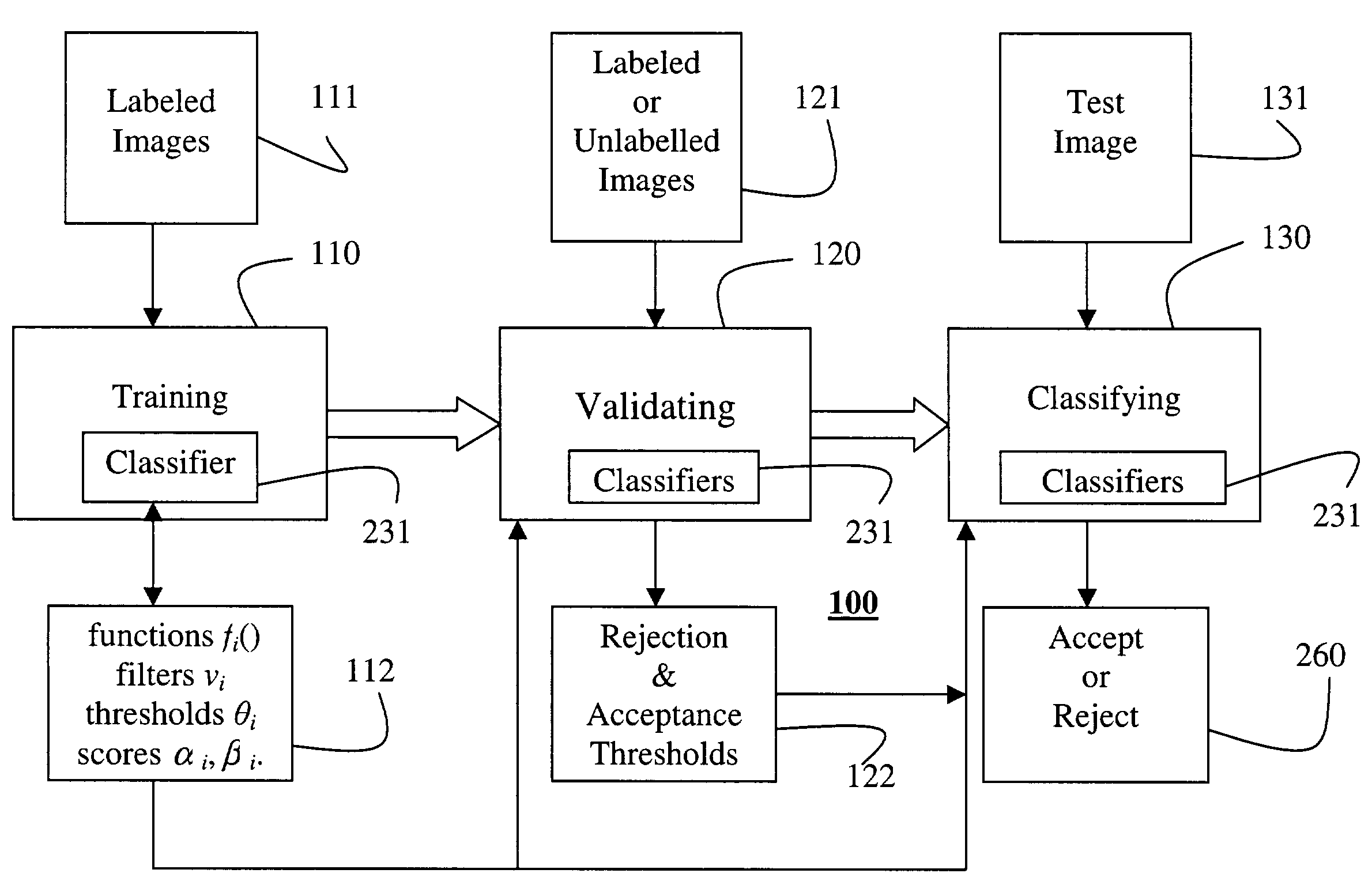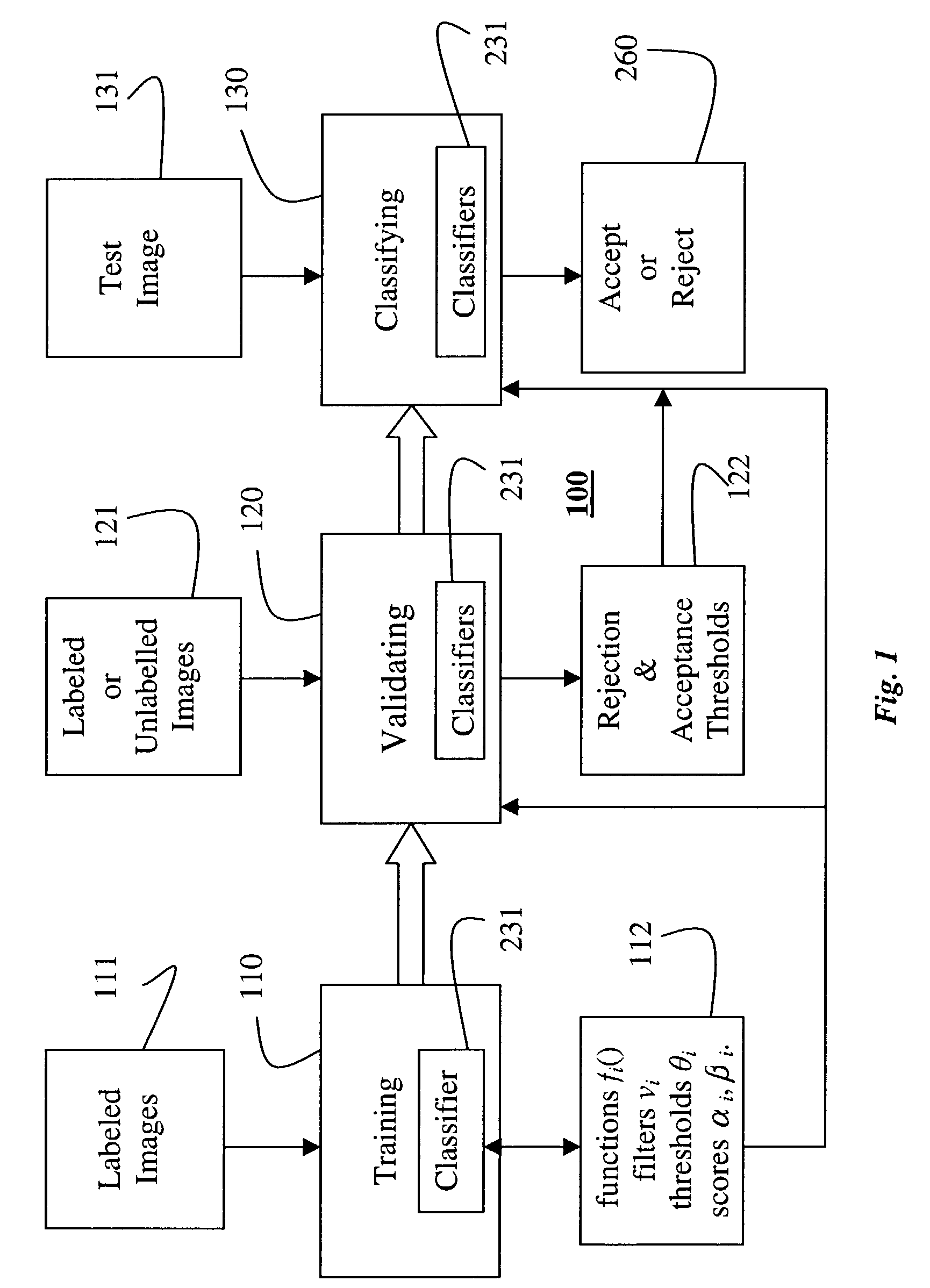System and method for detecting objects in images
a detection system and object technology, applied in the field of computer vision and pattern recognition, can solve the problems of low camera quality, poor lighting of a scene, and difficult face detection,
- Summary
- Abstract
- Description
- Claims
- Application Information
AI Technical Summary
Benefits of technology
Problems solved by technology
Method used
Image
Examples
Embodiment Construction
Overview of System Structure and Operation
[0022]FIG. 1 shows a system and method 100 for detecting objects in images according to the invention. In one application, the objects detected in the images are faces, however, it should be understood that other objects can also be detected. The system 100 includes three fundamental phases, training 110, validating 120, and classifying 130.
[0023]The training phase 110 takes as input a first set of labeled images 111. The nature of what is labeled in the images 111 determines what objects are detected. The labeled images 110 are processed to produce classifiers 231. As described in greater detail below, the processing uses a machine learning process to find an optimal set of parameters 112 for the classifiers 231.
[0024]The parameters 112 includes a sum of features. A feature is a function ƒi( ) of a filter νi applied to an image patch i and then compared to comparison threshold θi to yield either an acceptance score αi or a rejection score β...
PUM
 Login to View More
Login to View More Abstract
Description
Claims
Application Information
 Login to View More
Login to View More - R&D
- Intellectual Property
- Life Sciences
- Materials
- Tech Scout
- Unparalleled Data Quality
- Higher Quality Content
- 60% Fewer Hallucinations
Browse by: Latest US Patents, China's latest patents, Technical Efficacy Thesaurus, Application Domain, Technology Topic, Popular Technical Reports.
© 2025 PatSnap. All rights reserved.Legal|Privacy policy|Modern Slavery Act Transparency Statement|Sitemap|About US| Contact US: help@patsnap.com



